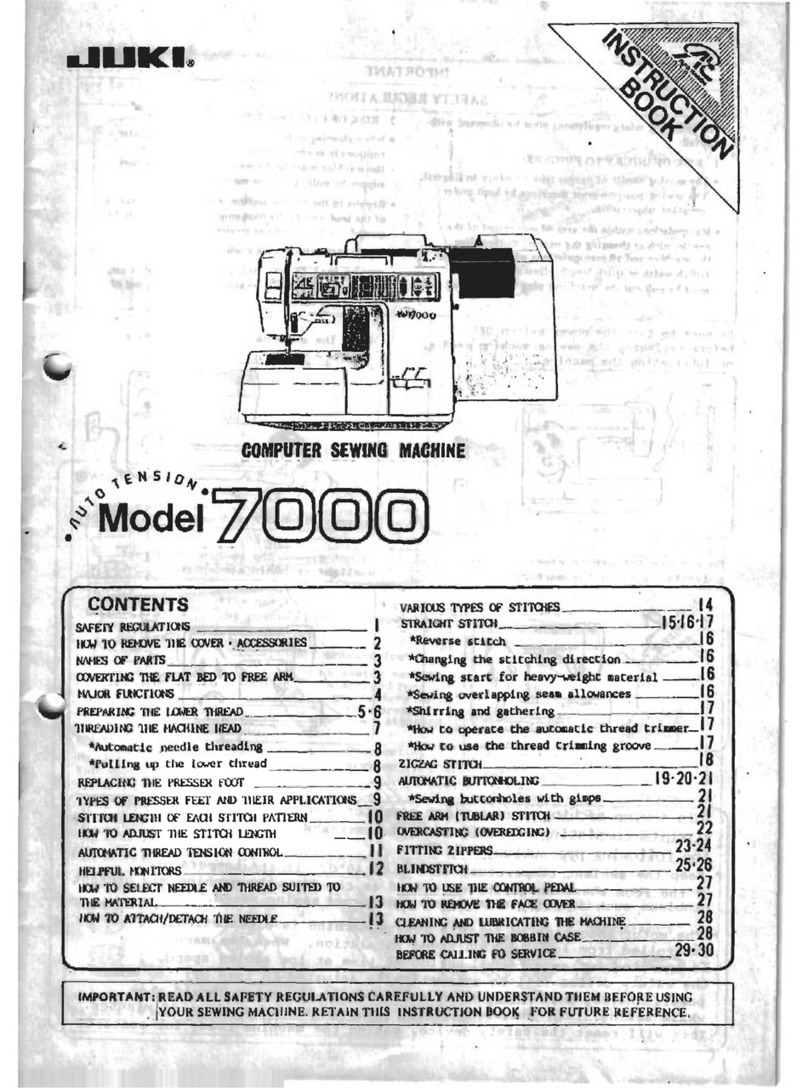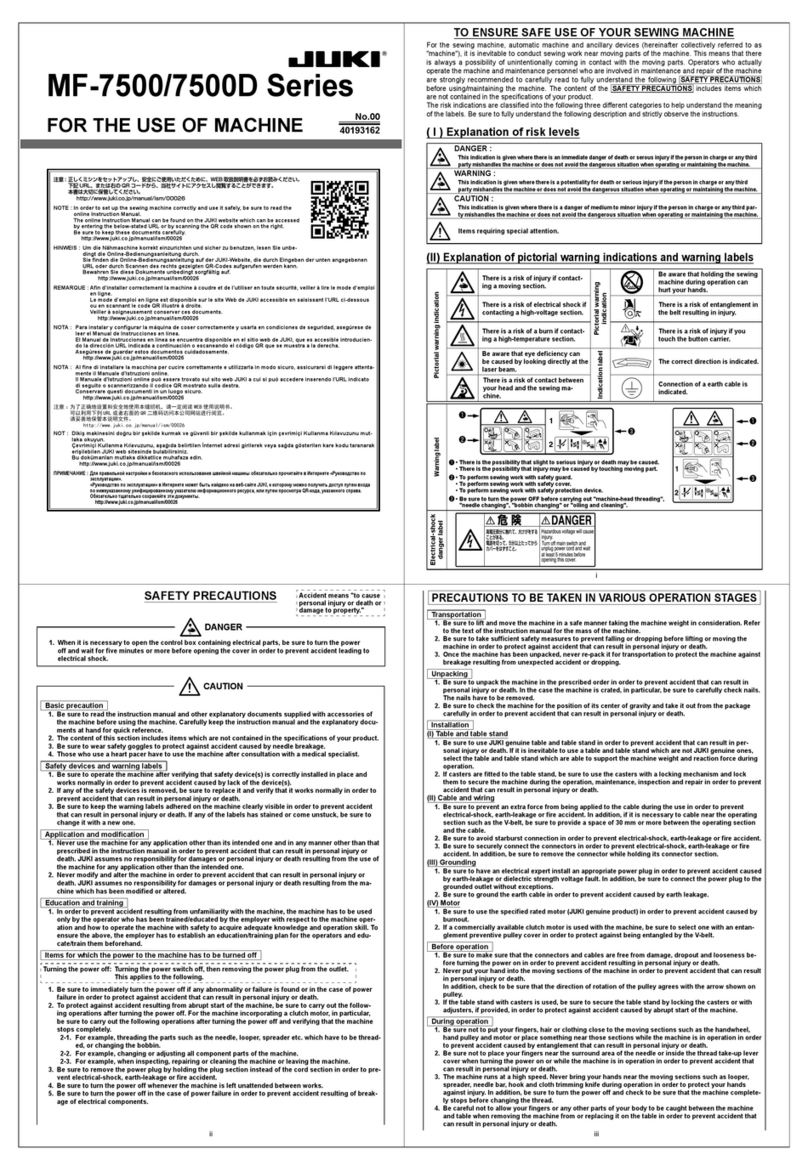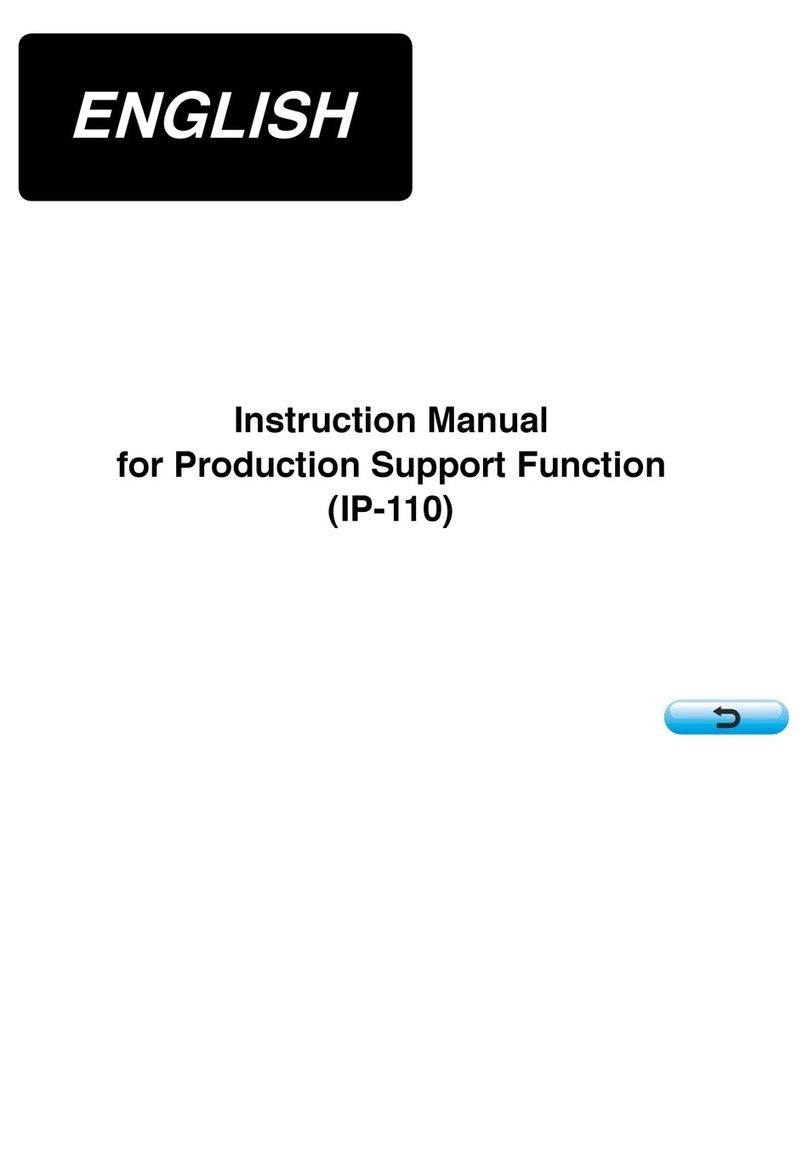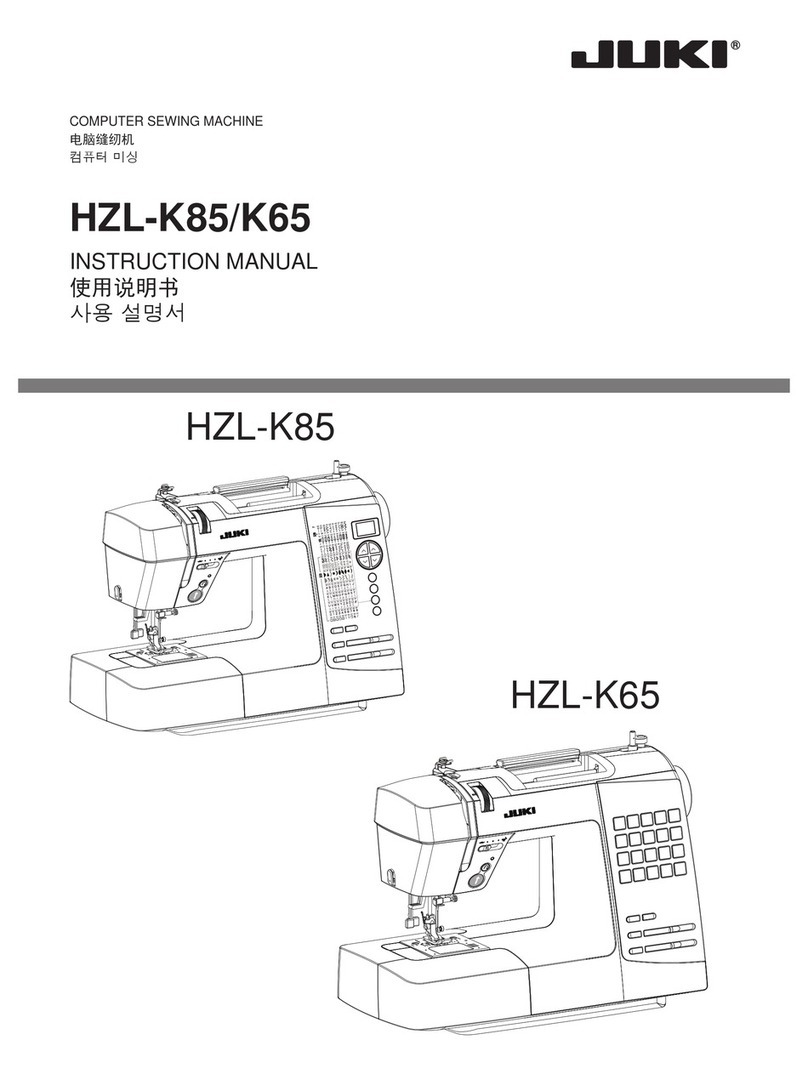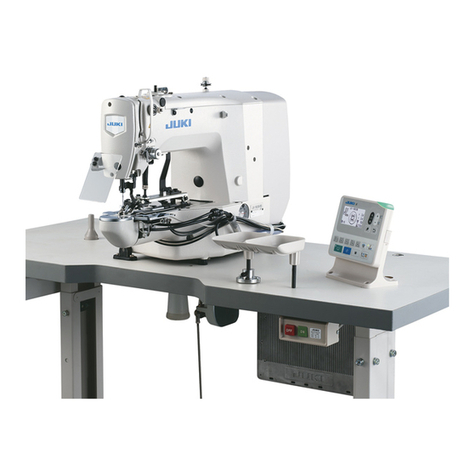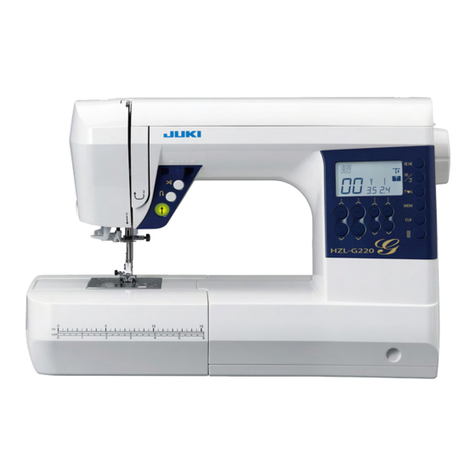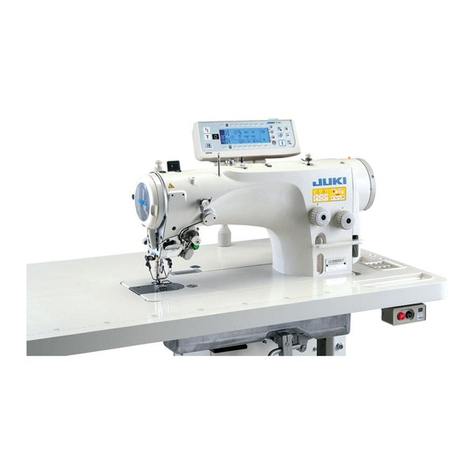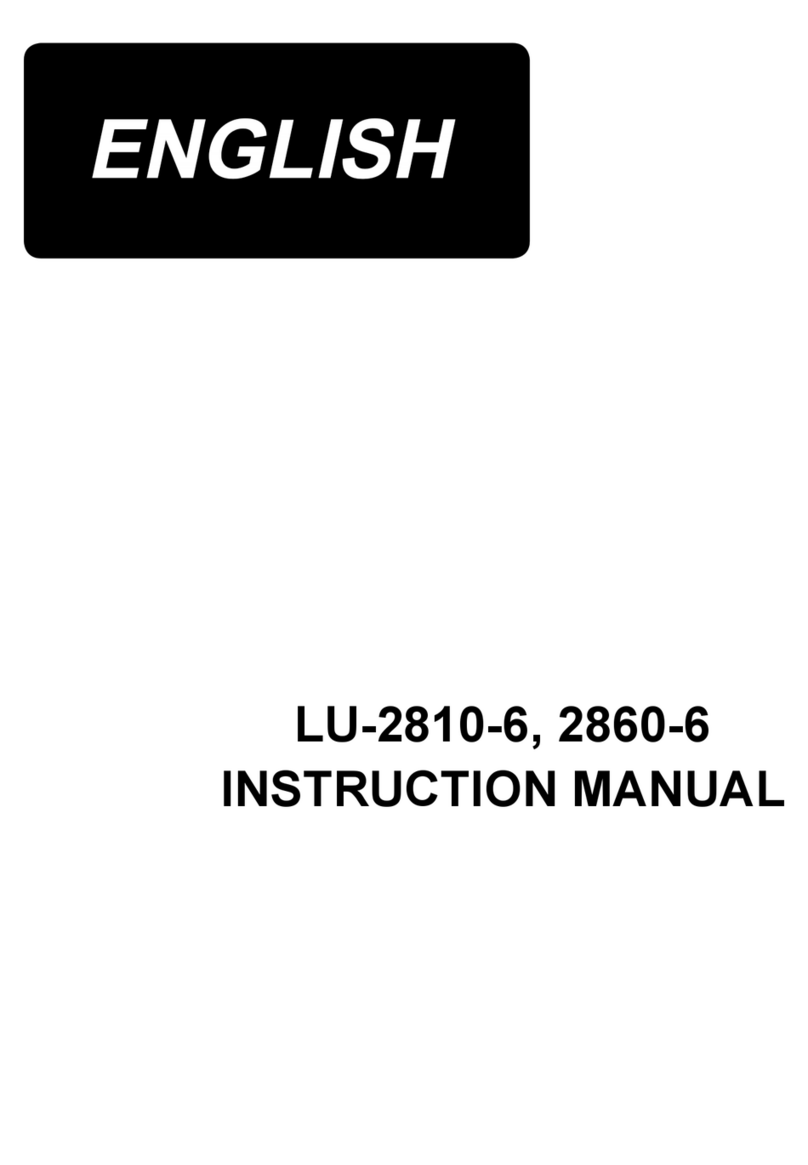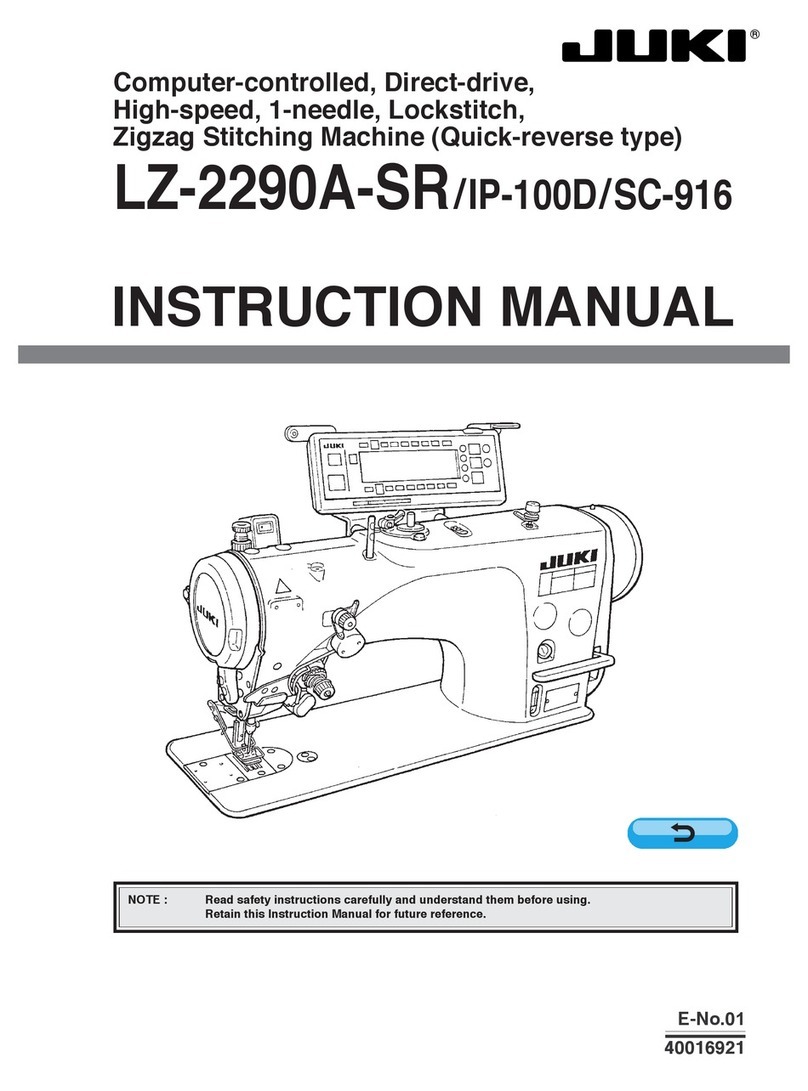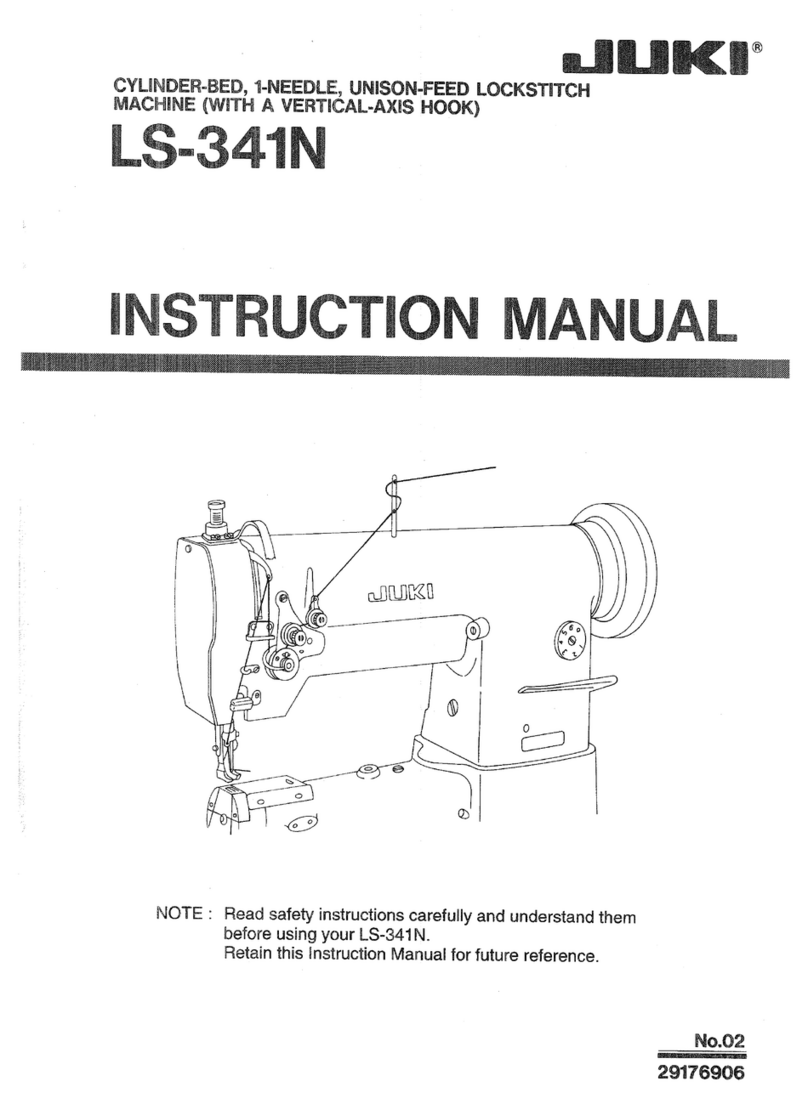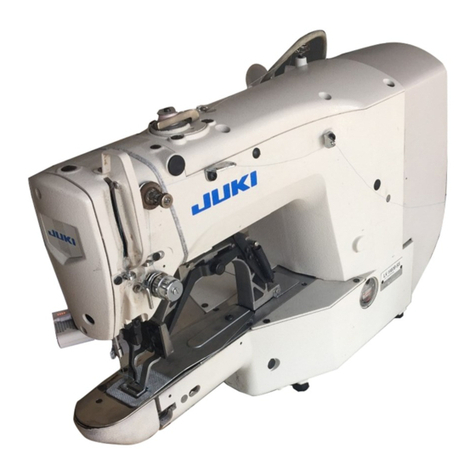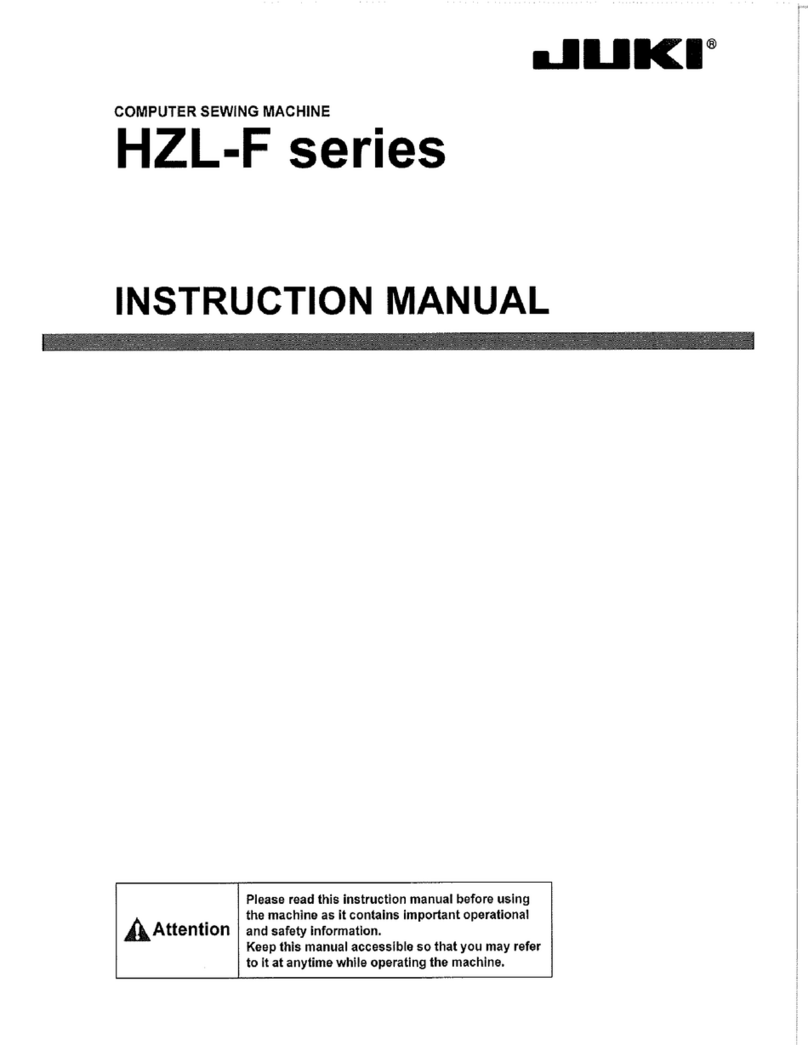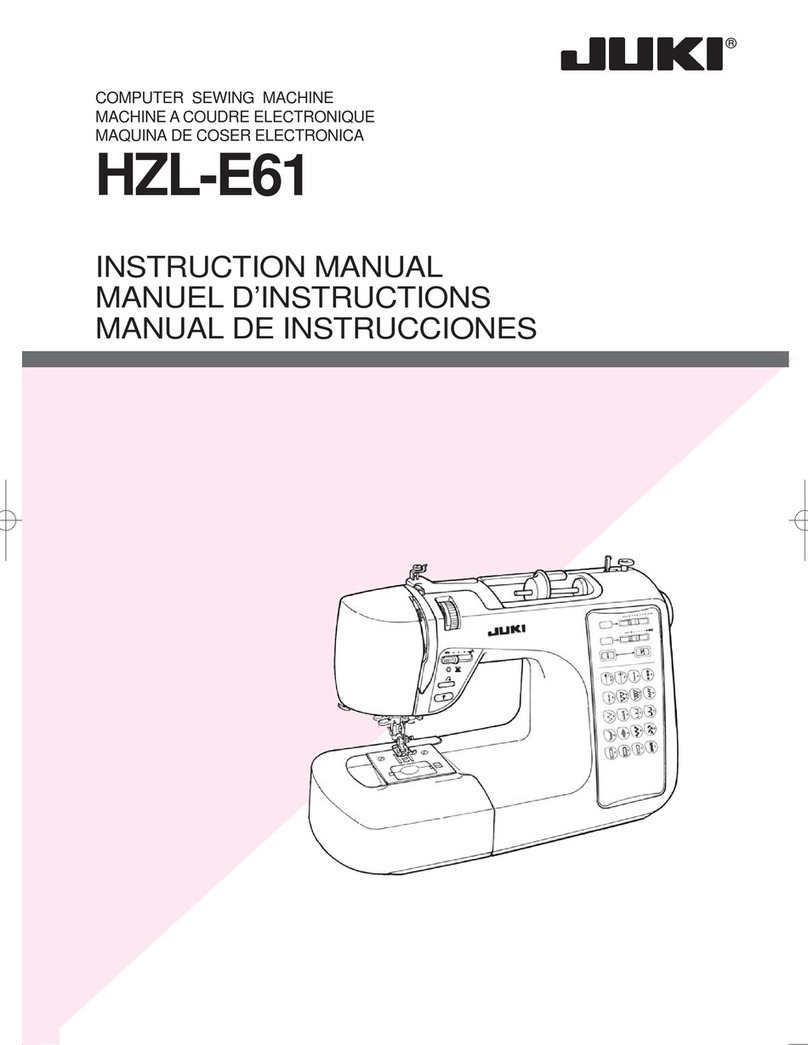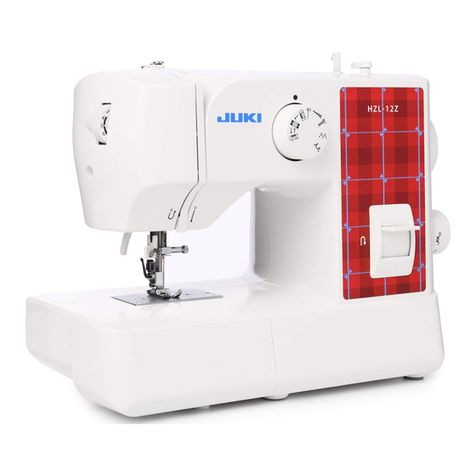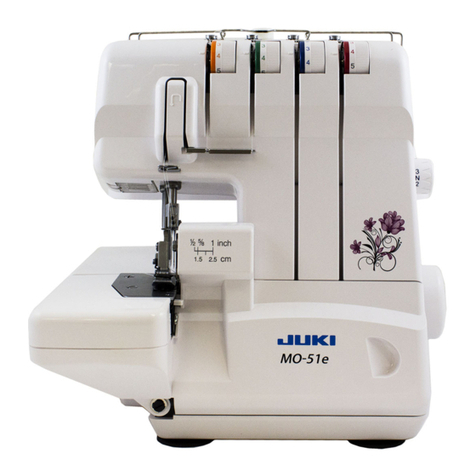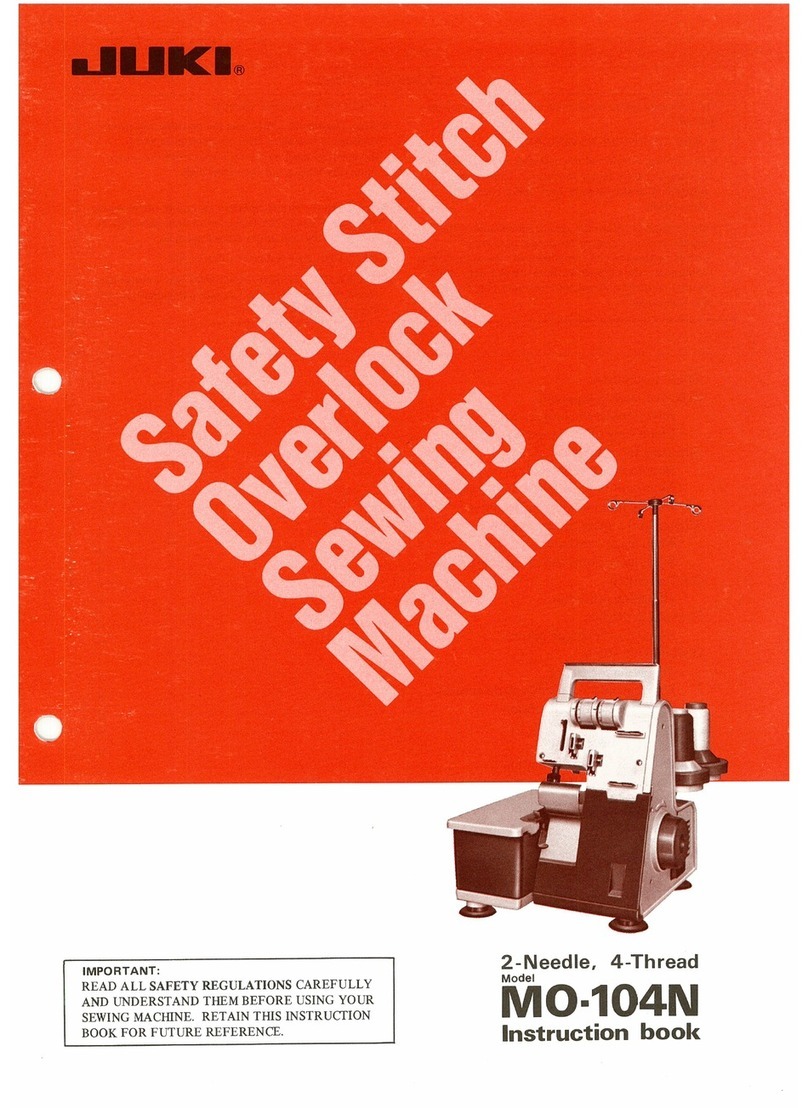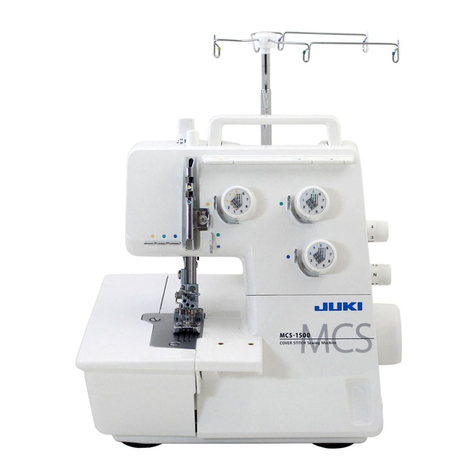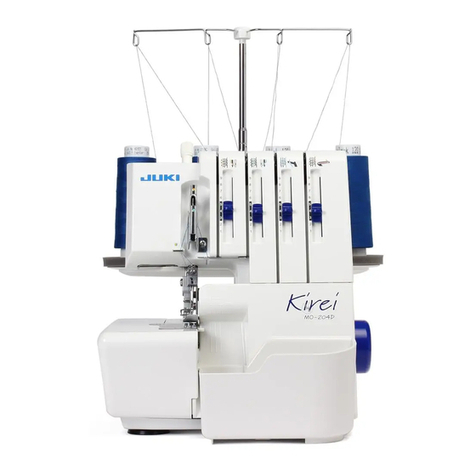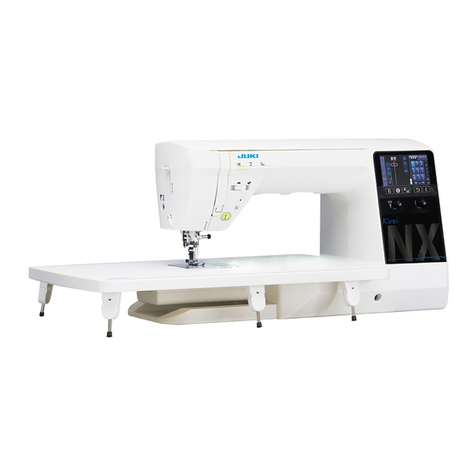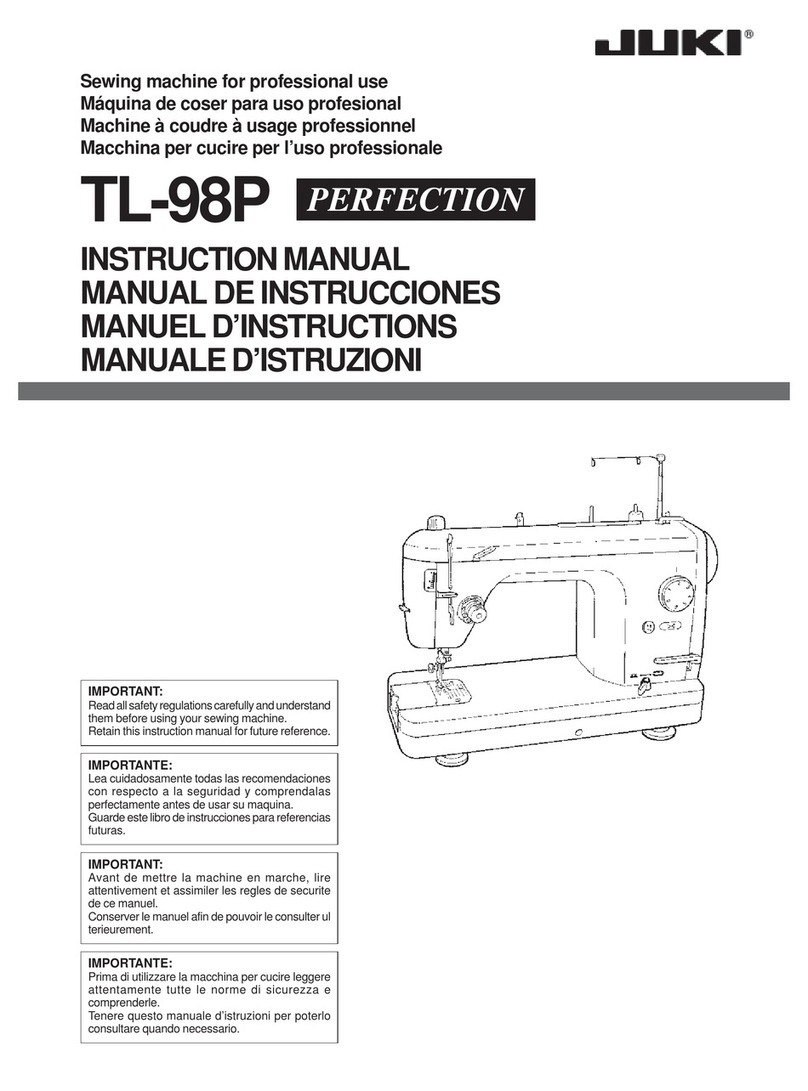
CONTENTS
Safety Matters for Attention .......................................................................... i
1. Signs & Denitions of Safety Marks ......................................................................... i
2. Safety Matters for ttention.......................................................................................... i
I. INSCAPE...................................................................................................... 1
II. INSTALLATION........................................................................................... 2
1. Installing the pedal sensor........................................................................................ 2
2. Attaching the connecting rod ................................................................................... 2
3. Installing the head support rod ................................................................................ 2
4. How to carry the sewing machine ............................................................................ 3
5. Installation of the sewing machine head ................................................................. 3
6. Installing the drain receiver and the head support rubber .................................... 4
7. Tilting the sewing machine head.............................................................................. 4
8. Installing the operation panel ................................................................................... 5
9. Installing the eye protection cove ............................................................................ 5
10. Installing the thread stand ...................................................................................... 5
III. OPERATION OF THE SEWING MACHINE............................................... 6
1. Lubrication.................................................................................................................. 6
2. Attaching the needle .................................................................................................. 6
3. Threading the machine head .................................................................................... 7
4. Installing and removing the bobbin case ................................................................ 7
5. Installing the bobbin .................................................................................................. 8
6. Adjusting the thread tension..................................................................................... 8
7. Adjusting the thread take-up spring......................................................................... 8
8. Example of the thread tension.................................................................................. 9
IV. MAINTENANCE......................................................................................... 9
1. Adjusting the height of the needle bar..................................................................... 9
2. Adjusting the needle-to-shuttle relation ................................................................ 10
3. Adjusting the lift of the work clamp foot................................................................ 11
4. The moving knife and counter knife....................................................................... 11
5. Draining waste oil .................................................................................................... 12
6. Amount of oil supplied to the hook ........................................................................ 12
